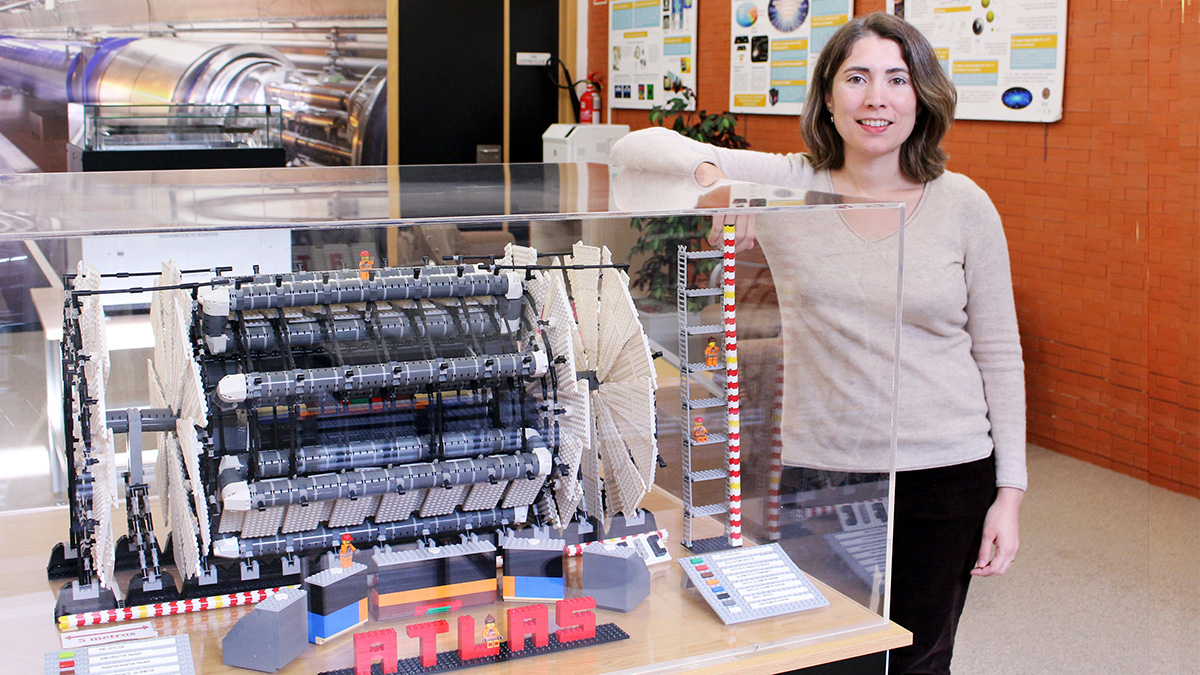Arantxa Ruiz Martínez, a researcher at the Institute of Corpuscular Physics (IFIC/UV-CSIC), is already in charge of the trigger of the CERN ATLAS experiment. Her team will be responsible for implementing improvements in the real-time data selection system of the said experiment. The goal is to explore new physical processes when the LHC resumes in 2022, which is currently in a period of maintenance and improvement.
In February 2020, Arantxa Ruiz Martínez was chosen by the ATLAS collaboration – made up of more than 3,000 scientists from 183 institutions in 38 countries – to coordinate the selection of real-time data from the experiment, one of the largest in the Large Hadron Collider (LHC) at CERN, the world’s largest particle physics laboratory. Since this October, she has been in charge of leading a team of more than 200 researchers and implementing improvements to the real-time data selection system. These are data that will allow them to explore new physical processes when the LHC resumes in 2022, after a period of maintenance and improvement of its facilities.
The ATLAS experiment is a huge particle detector 46 meters long, 25 meters high and 7000 tons in weight. It consists of a series of devices that are responsible for measuring and recording subatomic particles generated in LHC collisions. In this way the components of matter that form everything we see in the Universe are studied. This is how the Higgs boson was discovered in 2012, the elementary particle that explains the origin of the mass and the last piece to complete the Standard Model.
Among the multitude of collisions that occur in the LHC, it is crucial to select with high efficiency those that are most interesting for further study, such as those in which a Higgs boson is produced. The trigger system (selection of data in real time) uses algorithms implemented in both hardware and software to reduce the data throughput of one billion collisions per second by more than four orders of magnitude. In this way, about 1000 collisions per second are selected for storage on disk and subsequent analysis. Without the trigger, about 2000 petabytes of data would have to be processed and stored every day, which would not be acceptable for the procurement chain or for the available computing resources. The trigger is therefore of paramount importance for the experiment, since it is by definition the first selection cut-off in all ATLAS physics analyses.
This complex system is the one coordinated by Arantxa Ruiz Martínez (Girona, 1980), divided into four main areas and eight working groups dedicated to the reconstruction of different types of particles. Since October, she has been the main coordinator of the trigger of the experiment, after having been deputy coordinator for the last year, and is part of the ATLAS executive committee, which is the main management body of the collaboration where decisions are made that affect the entire experiment. Her mandate will coincide with the beginning of the third cycle of operation of the LHC, known as Run 3, which will begin in May next year.
“One of the main challenges will be the development of new elements, both hardware and software. Furthermore, the trigger must be able to support physics analysis from the first day of data acquisition in Run 3 and be fully in tune with the most advanced developments in offline reconstruction of data. In addition to these improvements, one of the objectives is to design an ambitious ‘trigger menu’ that allows covering kinematic regions unexplored to date. These challenges that I will face as coordinator will require a detailed and exhaustive planning, and very robust validation processes”, assures Arantxa Ruiz.
Graduated in Physics from the University of Valencia (2003), Arantxa Ruiz did her doctorate at IFIC on the development of the ATLAS hadronic calorimeter, one of the subdetectors that make up the experiment. After completing her thesis in 2009, she moved to CERN to work at ATLAS, first as a postdoctoral researcher at Iowa State University (USA), then as a CERN research fellow and later with Carleton University (Canada). In the last year of Run 2, the second operating cycle of the LHC (2015-2018), the researcher was in charge of coordinating the ATLAS trigger menu, made up of all the event selection algorithms used during the taking of data. In 2018 she returned to the Corpuscular Physics Institute as a Ramón y Cajal researcher.
More information
http://atlas.web.cern.ch/Atlas/Management/Organization.pdf
https://atlaspo.cern.ch/public/ATLASOrganisation/index.html?value=TRIGGER


